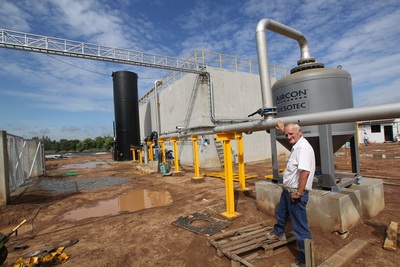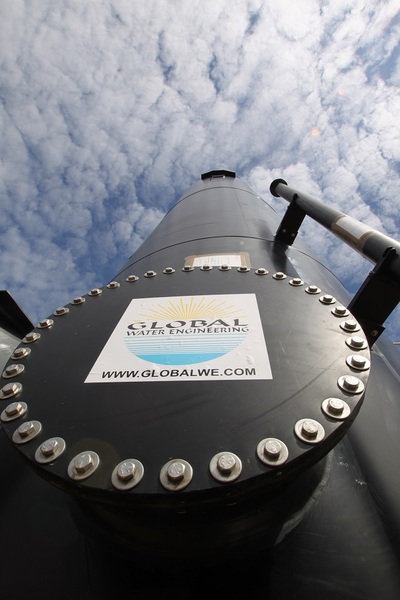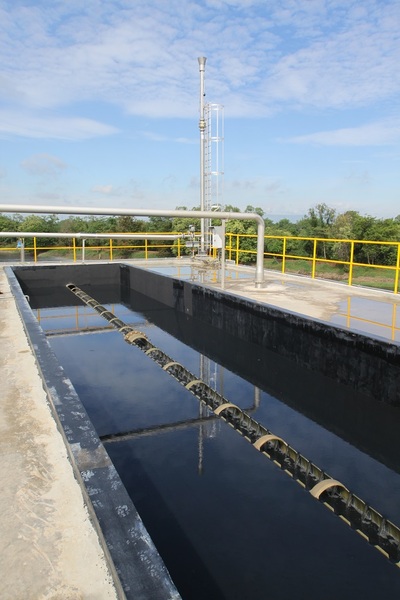Cane processors profit with green energy and environmental benefits
Friday, 12 July, 2013
A producer of green energy from food and agribusiness wastewater is deploying advanced anaerobic technologies that achieve high returns of biogas from the world’s largest crop - sugar cane.
Sugar cane is grown in more than 90 countries with a harvest exceeding 1.6 billion tonnes but has historically not been suited to biogas production because the vast amounts of water used in its processing were too weak in their organic carbon concentration to yield profitable amounts of methane. Global Water Engineering, represented in Australasia by CST Waste Water Solutions, says the industry has progressively used less water in recent years, increasing its waste stream concentrations to levels where it can be successfully exploited for biogas and produce less effluent pollution through the latest anaerobic technologies.
“Use of less water can produce major environmental benefits in the cane industry, where the size of a processing plant bears little relation to the huge amount of wastewater it has traditionally produced,” said GWE President and CEO Jean Pierre Ombregt. “We are now getting towards the stage where, instead of having a series of huge anaerobic and aerobic lagoons impacting the environment, we can treat the effluent in contained anaerobic reactors where biogas is extracted and influent wastewater is cleaned of most of its impurities without release to the environment.”
GWE has installed more than 300 anaerobic wastewater plants globally, with the biogas produced used to fuel boilers or generate green electricity. One of the latest cane sugar mills to use GWE anaerobic technology, incorporating its ANUBIX B reactor, is the United Farmer and Industry cane sugar mill at Khon Kaen in Thailand. The plant has a capacity of 3500 m3 a day of wastewater, containing 22,750 kg COD (chemical oxygen demand) of natural origin that can be broken down into biogas by anaerobic bacteria.

The process employed at the mill comprises influent screen, equalisation, pH control, anaerobic treatment, biogas flare and two-stage biogas sweetening (Bio-Sulfurix followed by activated carbon filtration). Biogas production is currently building to 9000 Nm3 a day (75% CH4), which will be used as fuel in several factory steam boilers. Wastewater effluent levels have also benefited, with a minimum of 85% removal of COD being achieved.
GWE’s ANUBIX B medium- to high-loading rate UASB (upflow anaerobic sludge bed) reactor employed at the plant is of a type used for most low- to medium-strength mainly soluble carbohydrate-containing effluents. The effluent COD reduction achieved at United Farmer and Industry is very good by cane industry standards.
“In addition to substantial environmental benefit from cleaner water being treated in reactor tanks rather than lagoons, the United Farmers plant achieves a supply of green energy that delivers energy savings virtually in perpetuity,” said Ombregt.


GWE anaerobic technologies of the type employed at United Farmer and Industry typically produce enough green energy to pay for the cost of their installation in one or two years. In addition, the reactors reduce the need for huge lagoons, with their associated odour, land use and environmental leaching issues. Anaerobic technology is applicable to any factory or process with one or more digestible solid waste streams.
Anaerobic digestion facilities have been recognised by the United Nations Development Programme as one of the most useful decentralised sources of energy supply, as they are less capital-intensive than large power plants. They can also benefit communities by providing local energy supplies and eliminate the need for large, smelly and environmentally challenging settling lagoons.
Researchers trial magnetic resin to remove PFAS
A magnetic resin invented at The University of Queensland will be trialled at wastewater...
A sustainable approach to increase wastewater recycling
Flinders University research is investigating improved effluent treatment and biosolids removal...
Inverell upgrades 30-year-old aeration system
The project entailed building a new tank at the Inverell Sewage Treatment Plant, to allow...










